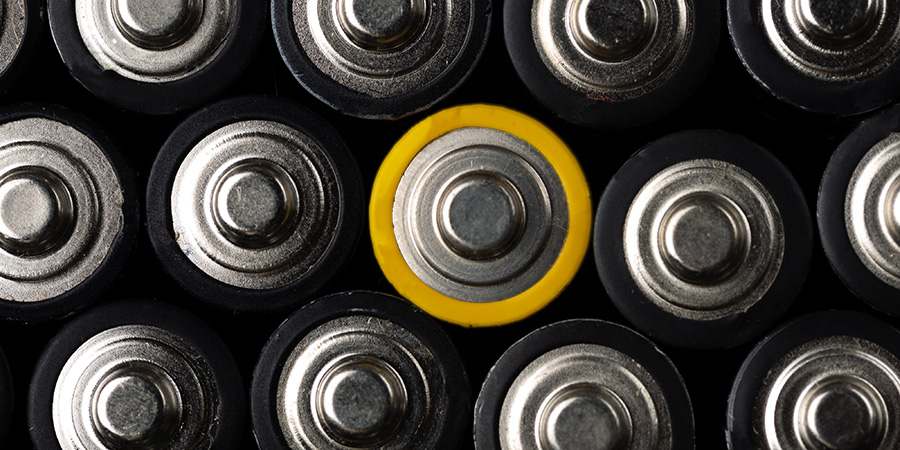Energy Blog: Hydrogen Progress on Many Fronts
Energy Blog: Hydrogen Progress on Many Fronts


Engineers and researchers are working to better understand hydrogen combustion, storage, and even natural reservoirs.
For many years, the model for the future of hydrogen has been stable. Because molecular hydrogen is almost impossible to find in nature, electrolysis from renewable electricity or high-temperature chemical processes driven by nuclear reactors would be the preferred means to obtain the fuel. And fuel cells, which combine hydrogen and oxygen across a permeable membrane to produce voltage, would be the primary means of utilizing the fuel.
That model may be how the world uses hydrogen in the coming decades. Recent announcements in the Germany, the United Kingdom, and the United States point to alternatives that might be more promising.
The jet engine manufacturer Rolls-Royce has been working on hydrogen-fueled power plants for aircraft for years. In experiments conducted by Loughborough University in the U.K., the German Aerospace Centre Deutsches Zentrum für Luft-und Raumfahrt (DLR), and Rolls-Royce, researchers ran a Pearl 700 engine on pure hydrogen fuel under high-stress conditions that replicated maximum take-off thrust.
The Pearl 700 is an engine that powers the Gulfstream G700 corporate jet.
Hydrogen for combustion: On Track to a Hydrogen-Powered Locomotive
Describing the work in a press statement, Rolls-Royce reported: “Key to that achievement has been the successful design of advanced fuel spray nozzles to control the combustion process. This involved overcoming significant engineering challenges as hydrogen burns far hotter and more rapidly than kerosene. The new nozzles were able to control the flame position using a new system that progressively mixes air with the hydrogen to manage the fuel’s reactivity.”
Gas turbines such as jet engines are a mature technology, so adapting them to operate on hydrogen is a key step toward bringing the fuel into the mainstream.
Hydrogen has a challenge of storage, however. Unless the gas is liquefied at hard-to-maintain cryogenic temperatures, the fuel has a much smaller energy density than competing liquid fuels. That makes storing enough in fuel tanks to support long-distance travel a problem.
One way to get around this challenge is find a hydrogen-bearing liquid that can easily release the gas when needed. Some companies are exploring using ammonia as this sort of carry, since it is liquid under mild refrigeration and is a commodity product that consists of simply nitrogen and hydrogen. Researchers are looking into more exotic compounds that can release hydrogen more easily. A group of chemicals called liquid organic hydrogen carriers (LOHC) are organic compounds that absorb and release hydrogen through chemical reactions. Some examples of the class of chemicals include toluene, n-ethyl carbazole, and dibenzyltoluene, which are already used as part of the hydrogen supply chain.
Green aviation: Fly the Climate-Friendly Skies
LOHCs are transported to refueling stations, where the hydrogen is chemically removed and compressed. The chemical reaction is endothermic and requires temperatures of around 300 °C. “This current approach incurs significant energy loss due to endothermic hydrogen release and compression at the retail station,” said engineer William H. Green of the Massachusetts Institute of Technology in Cambridge in a press statement.
Green and two colleagues published a paper in August in the journal Energy Fuels suggesting a better model would involve an onboard reactor that would strip the hydrogen from the LOHCs and deliver the gas to engines or fuel cells directly.
The researchers looked at a method for driving the chemical reaction via waste heat from engine exhaust. The fuel tanks—one for the hydrogen-rich LOHCs and one for the post-reaction residue—and reactor were sized for the needs of a long-haul truck.
The paper reported that the concept, which avoids compression and other energy-intensive steps, would be about 18 percent more expensive than current long-haul trucking using diesel fuel, but would cut carbon dioxide emissions by 71 percent. The team also found that refueling with LOHCs was faster and less complicated than using compressed hydrogen, though the chemicals do need to be handled with care.
One of the most pernicious challenges for hydrogen is supply, but even that may be due for a rethink.
Hydrogen is the most common element in the universe, but it is so reactive that most of the hydrogen on Earth is bound up to form compounds. Because of that, the emphasis has been on finding efficient ways to strip hydrogen from water, ammonia, methane, and other common substances.
More on this topic: Hydrogen Straight from the Earth
There is a growing body of evidence, however, that free hydrogen is not as uncommon as commonly thought. Recent research conducted by the U.S. Geological Survey estimates that hydrogen is produced by geological processes, such as radioactive decay and high-temperature transformation of rocks, in large quantities.
“Using a conservative range of input values, the model predicts a mean volume of hydrogen that could supply the projected global hydrogen demand for thousands of years,” said USGS research geologist Geoffrey Ellis in a press statement. “We have to be very careful in interpreting this number, though. Based on what we know about the distribution of petroleum and other gases in the subsurface, most of this hydrogen is probably inaccessible."
To better understand just how much natural hydrogen is accessible, ARPA-E, the high-impact research arm of the Department of Energy, announced a $20-million grant program in early September. In addition to essentially prospecting for natural hydrogen reservoirs, the agency has research programs aimed at duplicating natural hydrogen-forming processes, but at accelerated speeds.
Finding efficient and cost-effective ways to tap into natural hydrogen would overturn much of how we think about fossil fuels. Even if finding large reservoirs is unlikely, it’s a gamble worth taking.
Jeffrey Winters is editor in chief of Mechanical Engineering magazine.
That model may be how the world uses hydrogen in the coming decades. Recent announcements in the Germany, the United Kingdom, and the United States point to alternatives that might be more promising.
The jet engine manufacturer Rolls-Royce has been working on hydrogen-fueled power plants for aircraft for years. In experiments conducted by Loughborough University in the U.K., the German Aerospace Centre Deutsches Zentrum für Luft-und Raumfahrt (DLR), and Rolls-Royce, researchers ran a Pearl 700 engine on pure hydrogen fuel under high-stress conditions that replicated maximum take-off thrust.
The Pearl 700 is an engine that powers the Gulfstream G700 corporate jet.
Hydrogen for combustion: On Track to a Hydrogen-Powered Locomotive
Describing the work in a press statement, Rolls-Royce reported: “Key to that achievement has been the successful design of advanced fuel spray nozzles to control the combustion process. This involved overcoming significant engineering challenges as hydrogen burns far hotter and more rapidly than kerosene. The new nozzles were able to control the flame position using a new system that progressively mixes air with the hydrogen to manage the fuel’s reactivity.”
Gas turbines such as jet engines are a mature technology, so adapting them to operate on hydrogen is a key step toward bringing the fuel into the mainstream.
Hydrogen has a challenge of storage, however. Unless the gas is liquefied at hard-to-maintain cryogenic temperatures, the fuel has a much smaller energy density than competing liquid fuels. That makes storing enough in fuel tanks to support long-distance travel a problem.
One way to get around this challenge is find a hydrogen-bearing liquid that can easily release the gas when needed. Some companies are exploring using ammonia as this sort of carry, since it is liquid under mild refrigeration and is a commodity product that consists of simply nitrogen and hydrogen. Researchers are looking into more exotic compounds that can release hydrogen more easily. A group of chemicals called liquid organic hydrogen carriers (LOHC) are organic compounds that absorb and release hydrogen through chemical reactions. Some examples of the class of chemicals include toluene, n-ethyl carbazole, and dibenzyltoluene, which are already used as part of the hydrogen supply chain.
Green aviation: Fly the Climate-Friendly Skies
LOHCs are transported to refueling stations, where the hydrogen is chemically removed and compressed. The chemical reaction is endothermic and requires temperatures of around 300 °C. “This current approach incurs significant energy loss due to endothermic hydrogen release and compression at the retail station,” said engineer William H. Green of the Massachusetts Institute of Technology in Cambridge in a press statement.
Green and two colleagues published a paper in August in the journal Energy Fuels suggesting a better model would involve an onboard reactor that would strip the hydrogen from the LOHCs and deliver the gas to engines or fuel cells directly.
The researchers looked at a method for driving the chemical reaction via waste heat from engine exhaust. The fuel tanks—one for the hydrogen-rich LOHCs and one for the post-reaction residue—and reactor were sized for the needs of a long-haul truck.
The paper reported that the concept, which avoids compression and other energy-intensive steps, would be about 18 percent more expensive than current long-haul trucking using diesel fuel, but would cut carbon dioxide emissions by 71 percent. The team also found that refueling with LOHCs was faster and less complicated than using compressed hydrogen, though the chemicals do need to be handled with care.
One of the most pernicious challenges for hydrogen is supply, but even that may be due for a rethink.
Hydrogen is the most common element in the universe, but it is so reactive that most of the hydrogen on Earth is bound up to form compounds. Because of that, the emphasis has been on finding efficient ways to strip hydrogen from water, ammonia, methane, and other common substances.
More on this topic: Hydrogen Straight from the Earth
There is a growing body of evidence, however, that free hydrogen is not as uncommon as commonly thought. Recent research conducted by the U.S. Geological Survey estimates that hydrogen is produced by geological processes, such as radioactive decay and high-temperature transformation of rocks, in large quantities.
“Using a conservative range of input values, the model predicts a mean volume of hydrogen that could supply the projected global hydrogen demand for thousands of years,” said USGS research geologist Geoffrey Ellis in a press statement. “We have to be very careful in interpreting this number, though. Based on what we know about the distribution of petroleum and other gases in the subsurface, most of this hydrogen is probably inaccessible."
To better understand just how much natural hydrogen is accessible, ARPA-E, the high-impact research arm of the Department of Energy, announced a $20-million grant program in early September. In addition to essentially prospecting for natural hydrogen reservoirs, the agency has research programs aimed at duplicating natural hydrogen-forming processes, but at accelerated speeds.
Finding efficient and cost-effective ways to tap into natural hydrogen would overturn much of how we think about fossil fuels. Even if finding large reservoirs is unlikely, it’s a gamble worth taking.
Jeffrey Winters is editor in chief of Mechanical Engineering magazine.






